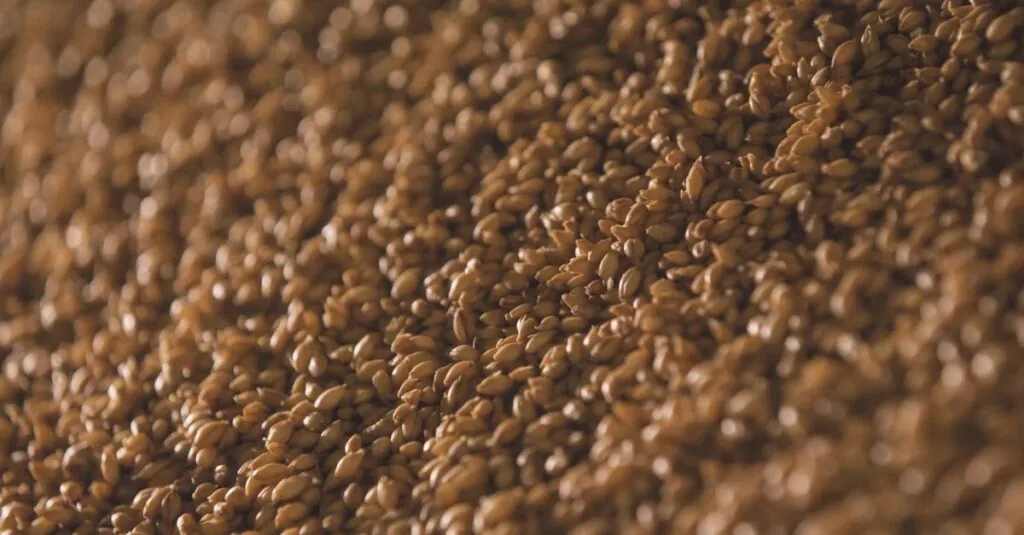Table of Contents
ToggleBarley might not be the star of the show in most kitchens, but it’s time to change that. This humble grain is like the underdog of the culinary world, waiting to shine with its nutty flavor and chewy texture. Whether it’s in soups, salads, or as a hearty side dish, barley packs a nutritional punch that even kale would envy.
Overview of Barley Cooking Techniques
Barley cooking techniques vary depending on the desired texture and dish purpose. Boiling remains a popular method, yielding tender grains ideal for soups and stews. Rinsing barley before cooking removes excess starch, enhancing its nutty flavor during boiling.
Pressure cooking significantly reduces cooking time. When using a pressure cooker, it typically takes about 20 minutes to achieve the appropriate tenderness. Steaming offers an alternative that preserves nutrients while creating a fluffy texture.
Toasted barley adds a deeper flavor profile. Toasting the grains in a dry skillet for several minutes before cooking enhances their natural nuttiness and aroma. Soaking barley can also improve the cooking process. Soaking grains in water for several hours or overnight decreases cooking time and improves digestibility.
Baking with barley can create hearty casseroles. Combining cooked barley with vegetables and protein enhances flavors and nutrients. Additionally, barley flour can be used in baking bread or muffins, bringing a unique taste and texture.
Salads benefit from adding barley as a base. Mixing cooked and cooled barley with fresh vegetables and dressings results in a wholesome meal. With these techniques, home cooks can enjoy the versatility of barley across various culinary applications.
Types of Barley
Barley comes in various forms, each with unique properties and culinary uses. Understanding these types enhances cooking techniques and dish variety.
Hulled Barley
Hulled barley retains its bran layer, making it more nutritious than other types. It boasts a robust, nutty flavor and chewy texture. Cooking hulled barley takes longer compared to pearl barley, typically about 45 to 60 minutes. Rinsing the grains before cooking enhances their flavor and removes any dust. This type of barley works well in hearty soups, stews, and salads. Nutritional content includes fiber, vitamins, and minerals, which contribute to a balanced diet.
Pearl Barley
Pearl barley undergoes processing that removes the bran layer, resulting in a quicker cooking time of about 30 to 40 minutes. With a softer texture and mild flavor, pearl barley suits various dishes, particularly risottos and casseroles. Using pearl barley in soups adds body without overpowering other flavors. It’s also a popular ingredient in side dishes, enhancing nutritional profiles while maintaining a pleasant taste. When cooked, pearl barley absorbs flavors well, making it a versatile choice for many recipes.
Basic Cooking Methods
Barley can be prepared using several basic cooking methods that enhance its flavor and texture. Each technique contributes to barley’s versatility in various dishes.
Boiling
Boiling barley remains the most common method. Rinsing the grains under cold water first ensures a cleaner taste. Typically, the process involves adding barley to a pot with a water ratio of 1:3, allowing it to simmer for about 30 to 40 minutes. Hulled barley usually requires longer cooking times, while pearl barley cooks more quickly. To achieve tender grains perfect for soups and stews, maintain a rolling boil, then reduce to low heat. After cooking, a gentle rest period allows the grains to absorb any remaining liquid.
Steaming
Steaming barley offers a healthy alternative that helps retain nutrients. This method involves placing rinsed barley in a steamer basket above boiling water. Covering the basket, maintain a gentle boil for approximately 40 to 50 minutes, monitoring for doneness. Steaming provides a chewier texture, making it suitable for salads or grain bowls. Additionally, soaking barley for a few hours prior to steaming can improve cooking efficiency and enhance tenderness. This technique highlights barley’s natural flavors without the need for added fats or oils.
Advanced Cooking Techniques
Barley shines in various advanced cooking techniques. These methods unlock its unique flavors and textures, enhancing culinary creations.
Baking with Barley
Baking with barley flour introduces a nutty flavor profile to breads and pastries. This flour can replace up to 30% of all-purpose flour in recipes, maintaining texture while boosting nutrition. Whole barley flour adds more fiber and vitamins, making baked goods healthier. Mixing barley flour with yeast allows for lighter, airier bread that retains moisture well. Experimentation with different ratios can yield exciting results, helping bakers create distinctive loaves and treats.
Using Barley in Soups and Stews
Combining barley with soups and stews elevates heartiness and flavor. When added during cooking, barley absorbs broth flavors, offering a satisfying chew. Hulled barley works best in longer-cooked dishes due to its robust texture. Pearl barley cooks quicker and blends seamlessly into lighter soups. Incorporation of barley in stews enhances nutrition, as it provides soluble fiber that promotes satiety. Adjusting the cooking time based on the type ensures perfect texture, creating wholesome meals to enjoy.
Tips for Perfectly Cooked Barley
Rinsing barley before cooking removes dust and impurities, enhancing its overall flavor. Use a 1:3 water ratio to achieve optimal cooking results. For hulled barley, a cooking time range of 40 to 50 minutes ensures tenderness, while pearl barley cooks within 30 minutes, yielding a soft texture.
Soaking barley for several hours can considerably reduce its cooking time and improve digestibility. Consider a soak of four to six hours for the best effects. Combining this technique with boiling leads to perfectly cooked grains that maintain their shape and chewiness.
Embracing steaming as a cooking method preserves nutrients and maximizes flavor. Steaming keeps the grains from becoming mushy, offering a fantastic texture for salads and side dishes. Try to use a steamer basket or a pot with a tight lid to manage the steam effectively.
Toasting barley in a dry skillet prior to cooking enhances its nutty flavor and aroma. Heat the grains for a few minutes, stirring continually until they turn golden brown. This technique significantly boosts the taste, especially in salads or grain bowls.
When incorporating barley into recipes, consider its compatibility with various ingredients. Pair it with roasted vegetables or proteins to create hearty dishes. Adjusting the cooking time according to the specific type of barley used further ensures the ideal consistency.
Experimenting with different cooking techniques reveals the versatility of barley in the kitchen. By combining methods and adjusting for flavor, one can unlock the full potential of this underappreciated grain.
Barley is a versatile grain that can elevate any dish with its unique flavor and texture. By mastering various cooking techniques like boiling, steaming, and toasting, cooks can unlock its full potential. Whether using hulled or pearl barley, each type offers distinct advantages that cater to different culinary needs.
Experimenting with barley in soups, salads, and baked goods can lead to delightful discoveries in the kitchen. As more people recognize its nutritional benefits and adaptability, barley is poised to take its rightful place as a staple ingredient in everyday cooking. Embracing this underappreciated grain opens up a world of culinary possibilities.




